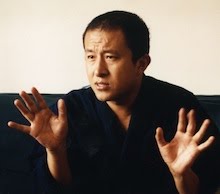- These schools correspond to our emotions, as Rinpoche points out when teaching Madhyamika. For example, the notion of "no self" offends everyday commonsense, and also Buddhist ideas of karma and reincarnation (how can we speak of a "person" taking rebirth unless there is some continuity between this life and the next life?), so the Vatsiputriyas (the Personalists) invented the notion of a real "Person" in order to explain this. We reflected that many of us have a similar emotional clinging to the notion of our own rebirth/next life.
- The essential view of the Tibetan Buddhist path was established over 2,300 years ago - so it's not at all a recent invention or reinterpretation. Even around 340BC, the Mahasanghikas had established a view that holds the seeds of the later Mahayana and Vajrayana. They believed: (i) the 'real' Buddha is transcendental, and the historical Buddha was simply a manifestation or magical emanation for the sake of teaching and benefiting sentient beings. In fact, Buddhas are manifesting at all times in all realms. (ii) the nature of thought/mind is pure, and all impurities (such as ignorance and negative emotions) are adventitious, i.e. they are not part of mind itself. (iii) the ultimate truth cannot be expressed in words or concepts - they can only ever refer to relative truth.
Sunday, June 28, 2009
Buddhist History - Week 2
On Sunday 28th June, we reviewed what we covered last week (to p.10 of Conze's "Buddhism: A Short History"), and then continued to p.22, covering the Three Jewels and the history of the "18 sects", including the three most important splits among the early Buddhist schools between ~340BC-240BC. A recording is available here (Hit the blue "Download Now" button. I hope quality issues have been resolved). Among the topics we covered this week:
Subscribe to:
Post Comments (Atom)
.jpg)
.jpg)
No comments:
Post a Comment